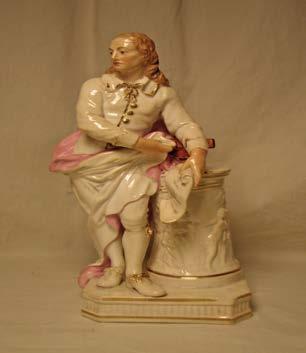






Contents copyright Yuko Nii Foundation 2019

KINGS COUNTY SAVINGS BANK BUILDING 2003

In late October 1996, Yuko Nii founded the non-profit The WAH Center (Williamsburg Art & Historical Center) based upon her Bridge Concept. That concept envisions a multifaceted, multicultural art center whose mission is to coalesce the diverse artistic community, and create a bridge between local, national and international artists, emerging and established artists, and artists of all disciplines. Thus through the international language of art we come to understand each other to create a more peaceful and integrated world. The WAH Center is a force for peace and understanding and it’s concept is incorporated in its acronym: “WAH” in Japanese means “peace” or “harmony” or “unity.”
Yuko also wanted to preserve the WAH Center’s building, a French Second Empire masterpiece, and make it a functional part of the cultural community of Williamsburg, Brooklyn, New York.


Table of Contents

List of Financial Contributors on Page 85
P.3-4 About The WAH Center
P5-7 The Kings County Savings Bank in the 19th c.
P 8-14 Floors and rooms at the Youko Nii Foundation
P 15-42 Examples of Furniture, Decorative Arts, Silver & Objet de vertu
43-50 Special Collections Library
51-64 The John Milton Collection
75-79 The Japanese Collection
80 The Permanent Collection of Contemporary Art
82-115 The Williamsburg Art & Historical Center Exhibits and Performances, an Overview
116 A Special Object, The Death Warrant of King Charles !


• A major sponsorship will pay for the necessary renovations needed for a permanent art exhibition installation. Additionally, a printed catalog to fea ture the collection and an event that centers on the exclusive opening of the exhibition will be included.
• Added Value for a major sponsor: Custom art display cases with your logo
– You will have naming exclusivity for the room where the exhibition is featured in the form of a plaque. A description of your support for the arts (optional)
– You will have an banner in a visibly prominent position for the opening gala event inside and outside the WAH center.
– You will be recognized for their support on the WAH Center’s webpage
– You will receive two tables (one table seats 4 to 6) at the gala.
– Your logo will be featured in the back of the printed catalogs (3000 in total).
– First rights of refusal on corporate sponsorships for future art exhibitions
• Cost of sponsorship: Call (917) 974-6096
• Email: wahcenter@earthlink.net
Also available: naming rights for exhibit rooms as seen in this catalog and also the future elevator.
Contributions in any amount always welcome on Paypal: donatewah@gmail.com
FROM WIKIPEDIA:

The Kings County Savings Institution was chartered on April 10, 1860. It carried out busin ess in a building called Washington Hall until it purchased the lot on the corner of Bedford Avenue and Broadway and erected a permanent home.
The Kings County Savings Bank has long been considered a landmark of Williamsburg. By 1900, during the construction of the Williamsburg Bridge, the neighborhood had changed, and the Bank building was already seen as an icon of "old Williamsburg." It remains one of the most important historical landmarks in Williamsburg, and was recognized by the New York City Landmarks Preservation Commission in 1966, the seventh building to be so designated. It was placed on the National Register of Historic Places, 1980
"The Kings County Savings Bank is an outstanding example of French Second Empire architecture, displaying a wealth of ornament and diverse architectural elements. A business building of imposing grandeur, the Kings County Savings Bank "represents a period of conspicuous display in which it was not considered vulgar, at least by the people in power, to boast openly of one's wealth. From its scale and general character there is nothing, on the outside, that would distinguish the Kings County Savings Bank from a millionaires mansion." (from History Preserved: New York City Landmarks & Historic Districts, Harmon H. Gladstone & Martha Dalyrmple, Simon & Schuster, 1974).
The building remained in continuous bank ownership and use for well over a century. It ceased to be used as a bank in the 1980s.

Over the years, much of the rich detailing has been lost. Here you see the railing around the flat roof. Although the city, state and federal governments should take a hand in helping to restore one of America’s greaest buldings, politics drives the money elsewhere.
THE FOUNDATION WILL EVENTUALLY RESTORE ALL THE ELEMENTS. BUT, SINCE WE GET NO HELP, IT MAY BE A WHILE.


There was once a Gothic style church behind our building. It was torn down to make way fot the Williamsburg Bridge.


There was once a fountain in front of our building. It was removed to build trolly tracks. Today the city has put back a plaza.










FIRST FLOOR


TREASURE ROOM



PERIOD ROOM




































Vinegar cruet stand, with striking Neoclassical figural central handle, elegant palmette and perlé borders, and rectangular base on claw feet embellished with applied reticulated and pierced palmette and rosette motifs. Its two decanter holders feature delightful repoussé and chased depictions of the mischievous Eros / Cupid, clutching an arrow in his hands. Standing a regal 11.4" high, and a 9" wide base.794 grams (1620 grams including decanters), and is stamped on the base, decanter holders, and central column with the 1809-1819 French COQ 950 mark, 1809-1819 Paris Guarantee, Silversmith's Association mark for Paris (1789), and maker's mark for Parisian silversmith S.J. DUPEZARD, active1809 to c.1822. The two high quality flute and diamond-cut crystal decanters are most certainly later additions, lacking stoppers.


French Napoleon III era sterling silver covered sugar caddy or casket, ornate styling with foliate garland, side handles and finial! A beautiful piece! We received it from France with quite a bit of rippling or denting around the edge of the lid and thought that the lid might be a mis-match but the hallmarks all match so it's definitely original. 7 troy oz. or 220 grams. Minerve or Minerva hallmarks on both pieces, 1st titre designating .950 silver content (higher than the standard for sterling). Silversmith marks for Auguste Guyot.




































Pierre -Antoine Bellangé (1757 –1827) was a French ébéniste (cabinetmaker) working in Paris. He produced furniture for Napoleon at Saint-Cloud , for the Tuilleries, Joséphine's Château de Malmaison, and also for his brother Joseph Bonaparte.





Gold and ivory note case with pencil c 1800. Portait on ivory of a young officer. The back contains locks of his braided hair. Souvenier for his wife or lover.


Brûle-parfum, bronze, French, late 18th C.













Johann Heinrich Roos (29 September 1631, Otterberg - 3 October 1685, Frankfurt) was a German Baroque era landscape painter




Sèvres vase 19th C., signed Deprez


Portrait of a Princess, 1826, property of the Yuko Nii Foundation. The above painting is said to be one of Pingret’s finest portraits on Wikipedia.

Pingret, Edouard(-Henri-Théophile) [Eduardo] Born in St. Quentin, France. Painter to the King. Studied under painter Jacques-Louis David; later studied at the Academy of Saint Luke in Rome. Exhibited regularly at París salons, 1810-1867. Received a gold medal and was appointed a Knight of the Legion of Honor, 1831. Traveled to Mexico on business, continued to paint. First exhibited at the Academy of San Carlos, c. 1850. Second exhibition of forty painings depicting Mexican customs and landscape was well received, 1852. Later expelled from Mexico for interfering in national politics. Edouard Pingret is best known in Mexico for his paintings created during his travels, which document local customs and geography. Perhaps initially attracted to Mexico because of his interest in the exotic, Pingret was among the first artists who painted scenes of Mexico as they actually appeared. Through his example he encouraged his contemporaries to appreciate the beauty and color of the Mexican landscape.















Central emerald is Columbian, 134 carats











Stunningly rare Ottoman Turkish Islamic empire Khud battle warrior horn helmet. Has demon devil face with mustache and ears. The surface of helmet and bottom rim band has pious Islamic Arabic calligraphy to invoke God's power and blessing to win battle. Damascened koftgari f heavy steel , hand hammered and hand chiseled. Nasal guard is sliding and adjustable .


Detail











A 16 th C. SHANAMA, Persian bo ok of kings. C. 1508 AD. With 18 illiuminated miniature paintings illustrating the mythical lives of the Persian kings.







Magnificent Japanese books manuscripts and wood block prints
17th – 20th C.









Dimensions: 2.3 x 2 cm (7/8 x 13/16 in. ) each


From Wikipedia: The Grave is a blank verse poem by the Scottish poet Robert Blair [2] It is the work for which he is primarily renowned.[2][3] According to Blair, in a letter he wrote to Dr. Dodderidge, the greater part of the poem was composed before he became a minister,[2] Edinburgh editor and publisher John Johnstone stating that it was composed whilst he was still a student, although "probably corrected and amplified by his more matured judgement".[3] The poem, 767 lines long, is an exemplar of what became known as the school of graveyard poetry [4]
Part of the poem's continued prominence in scholarship involves a later printing of poems by Robert Hartley Cromek which included illustrations completed by the Romantic poet and illustrator William Blake . He completed forty illustrations for the poem, twenty of which were printed in Cromek's edition.[5][6][7] Blake's original watercolours for the prints were believed lost, until they were redisc overed in 2003.[4]


The Expulsion, pencil on paper, circa 1800, Unknown artist Collection of the Yuko Nii Foundation




This shield was made for the Paris Exhibition of 1867 by Elkington & Co. designed by Leonard Morel -Ladeuil (about 1820-1888). He worked for Elkington & Co. from 1859 after serving his apprenticeship in France with Antoine Vechte (1800 -1868. At the exhibition it won a gold medal. The Art Journal declared, 'There is a general impression that the work...is the best...exhibited during the memorable year of 1867'. The theme concerns the work of a great Englishman, the poet John Milton (1608-1674). The panels represent scenes from Milton's epic poem Paradise Lost .



 Above: The YNF’s 19th c. oil Portrait of Milton dictating Paradise Lost to his daughters at Milton’s Cottage.
Milton’s Cottage Trust (CIO) is a Registered Charity 1163039 21 Deanwa y, Chalfont St Giles, Buckinghamshire, HP8 4JH, England
Above: The YNF’s 19th c. oil Portrait of Milton dictating Paradise Lost to his daughters at Milton’s Cottage.
Milton’s Cottage Trust (CIO) is a Registered Charity 1163039 21 Deanwa y, Chalfont St Giles, Buckinghamshire, HP8 4JH, England


 Above is the “Harmless Innocence” page from the Yuko Nii Foundation Gold Elephant Folio. It is also the cover for the Cambridge Companion to Paradise Lost
Above is the “Harmless Innocence” page from the Yuko Nii Foundation Gold Elephant Folio. It is also the cover for the Cambridge Companion to Paradise Lost

Pages from the Traveling Elephant Folio with giclee prints, original drawings and 24 k gold embellishments





Book label of Madam Pomfret in her 1688 first illustrated edition of Paradise Lost. Madam Pomfrret was the Lady of the Bedchamber to Queen Carolyn.

In 1755 Henrietta Louisa Jeffreys, Countess of Pomfret, donated a substantial collection of Greco-Roman statuary to the University of Oxford.


 Henri Fuseli, engraved by A. Smith
Published by Vernor, Hood and Sharpe, 1808
Yuko Nii Foundation Collection
Henri Fuseli, engraved by A. Smith
Published by Vernor, Hood and Sharpe, 1808
Yuko Nii Foundation Collection
THE FEATURES OF THE BOOK

1) The Henri Fuseli (1741 – 1825) engravings by A. Smith in this book were done while Fuseli was alive in 1808. He is certainly as great an illustrator of Paradise Lost as Blake. The Wickenheiser collection contains an 1802 version.
The first of Blake's Paradise Lost, the Thomas set, were done in 1807. In 1799 Fuseli exhibited a series of paintings from subjects furnished by the works of John Milton, with a view to forming a Milton gallery comparable to Boydell's Shakespeare gallery. There were 47 Milton paintings, many of them very large, completed at intervals over nine years. The exhibition proved a commercial failure and closed in 1800.
2) The Royal & Historical Association: bookplate of E. Neville Rolfe, Beecham Hall with a dedication note by A.R. (Agnes Rolfe, Neville's wife) 1815 and a late 19th c. note describing in detail Dore's VALE OF TEARS (1883), on the 1815 exhibit of Dore's last painting at the Dore Gallery, London. Strickland Charles Edward Neville Rolfe, born in 1789, eldest son of General Neville of the Royal Artillery. Educated at Wadham College, Oxford, BA 1812, MA 1816, and subsequently became domestic chaplain to the Duke of Kent in 1814 and to the Duke of Somerset in 1825. He became domestic chaplain to the Duke of Kent in 1814 and to the Duke of Somerset in 1825. 1st Duke of Kent and Strathearn (1767–1820), was Prince Edward, fourth son of George III and father of Queen Victoria. .
Neville's first wife, Agnes, was the only daughter of Henry Fawcett, MP for Carlisle who was Sheriff, Bombay 1785; capt. Bombay fencibles 1799. They married in 1814 and had five sons and four daughters. In 1833 he married Dorothy, widow of the Rev TT Thomason, Chaplain to the Honourable East India Company. It is known that he was an enthusiastic collectorand invested time in both natural and archaeological items, as well as having a keen interest in art. Rolfe had had a number of artists, (possibly Fuseli) staying for long periods to study artistic endeavours at Heacham Hall. It is said that he had a large coach built in which he took these artists on excursions to draw and paint buildings or articles of interest in and around the area. He was especially interested in the area of Norfolk and part of his collection of portraits of Norfolk celebrities, original drawings, topographical and antiquarian, were sold by Sotheby's. Some of these pieces were used to extra illustrate 'Blomefield's History of the County of Norfolk' (compiled by Francis Blomefield and published in 1805). Later, in 1929, a number of watercolour drawings from the collection were also used to illustrate a publication compiled by his great grandson, Clement Rolfe-Ingleby, and entitled 'A supplement to Blomefield's Norfolk.'
3) The book also has a late 19th c. note describing in detail Dore's VALE OF TEARS (1883), on the 1883-later exhibit of Dore's last painting at the Dore Gallery, London. During its twenty-four year lifespan, the Doré Gallery and its twenty or so canvases received approximately 2.5 million visitors. In 1892, most of the paintings were sent to the United States to be exhibited in a touring exhibition lasting until 1898. They then sank into oblivion. They were rediscovered in 1947 in a Manhattan warehouse, sold at auction and split up.

The size of the book is 8vo (octavo).This size is made by printing eight pages of text on each side of a sheet, which was then folded three times to form gatherings of eight leaves or sixteen pages each handsomely bound with gorgeous red morocco leather gold-gilt framing of both front and back covers, as well as gilt titling and ornamental compartments on the spine 5 raised bands brilliantly gilt golden edged pages printed half-title and title pages e ngraved vignette title, plain green endpapers.







A dedication note by A.R. (Agnes Rolfe, Neville's wife) 1815. The dedcation reads:

”A.R.
to W.C. & W.C. to his dearest J.C. – 1815”


Title page






Betw een the pages of the Fuseli Paradise Lost is a hand written “review” of the showing of Gustave Dore’s last painting, The Vale of Tears. Also included is a newspaper announcement of the exhibit.





Other illustrations in the book are by


These YNF alabasters replicas of the Autun Cathedral Adam and Eve lintels were probably done while the Autun lintels were intact before or after the 15th century fire or before the 18th century “redecorating” and plastering or even the possible French Revolution smashing, which means centuries, or even back further to the 12th century. The YNF only surviving replica of this Gislebertus Adam masterpiece, which makes it





 Left: cherry wood sculpture of Eve circa 1940 by McNeil Smith
Right: 17th C. Torah Scroll of the Book of Genesis, 23 feet long
Left: cherry wood sculpture of Eve circa 1940 by McNeil Smith
Right: 17th C. Torah Scroll of the Book of Genesis, 23 feet long



























Temple Lintel by The Michelangelo of Echigo in the Yuko Nii Foundation Collection

Ishikawa Uncho (1814-1883), rose to national prominence. Now he is called the Michelangelo of Echigo (Echigo is a former name of Niigata Prefecture). This would be a national treasure if in Japan.
The Michelangelo

The Japanes Collection contains nearly 200 paintings and scrolls.




The foundation also has nearly 1000 works of contempoary art, displayed frequently.



